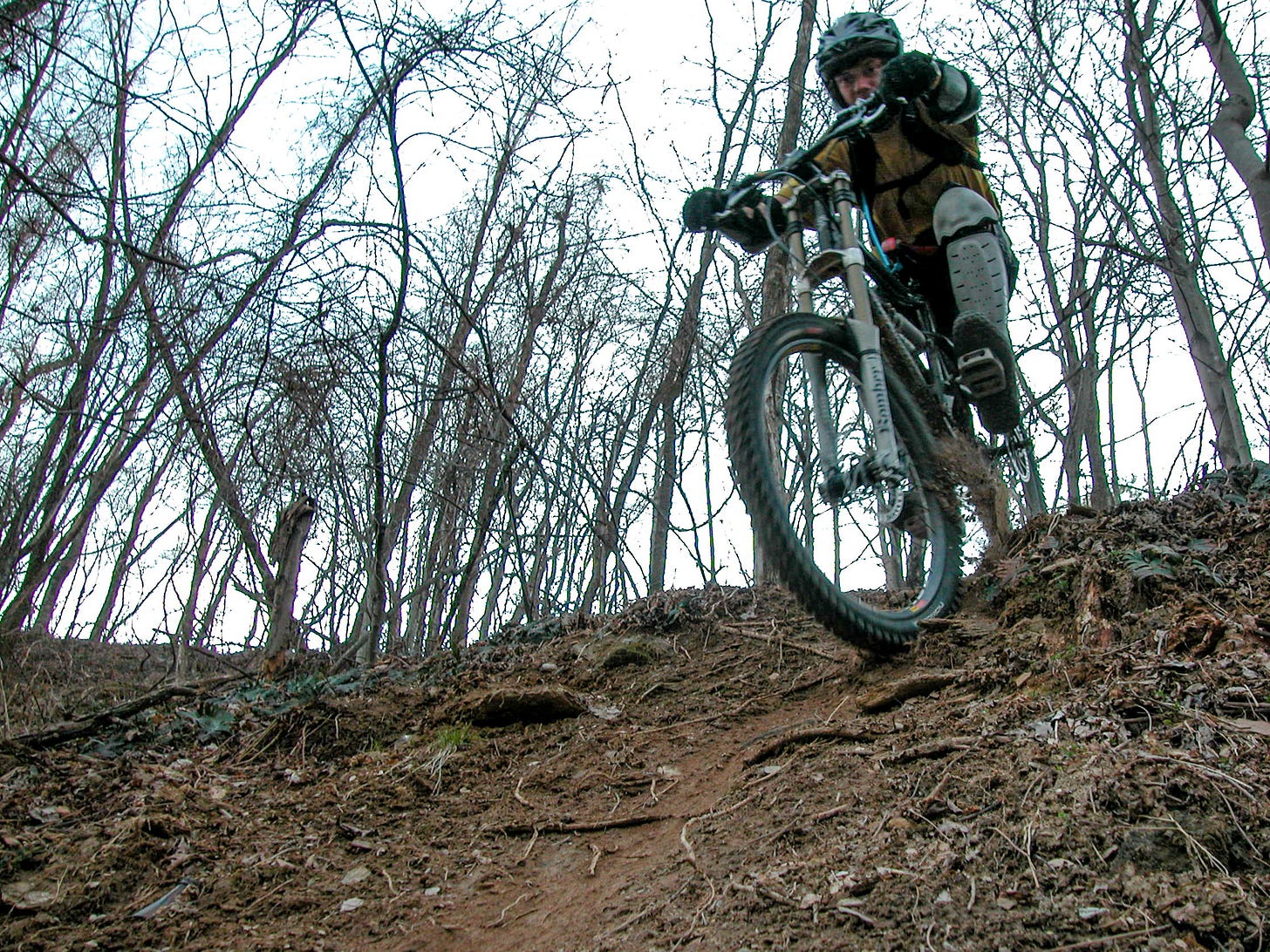Foreward by Daniel Sapp: Kristian Jackson is based in Boone, NC, and brings a wealth of mountain biking expertise from his experiences on the trail and in the classroom. As a Senior Examiner for the Professional Mountain Bike Instructor Association, the Trail Boss at Rocky Knob Mountain Bike Park, and Senior Lecturer in Recreation Management at Appalachian State University, he combines his knowledge from a myriad of unique experiences in all aspects of his career. Kristian was a professor of mine in college, and we have continued to work together on various projects, including advocating for mountain biking in Western North Carolina and beyond. We have collaborated on multiple articles and stories and spent many hours exploring the woods by bike together over the years. This is the second of several articles from Kristian in a series called ‘The Mountain in Mountain Biking,’ which will feature stories and ideas from where ambition and obstacles collide based on his own observations, his professional experience in teaching and coaching, and discussions we have shared.
The Foundation of Confidence
I’d be willing to bet that several people have made a small fortune selling posters and trinkets with quotes from Wayne Gretzky, Michael Jordan, and others emboldening people to be confident and take action. “You miss 100% of the shots you don’t take.” “Why would I think about a shot I haven’t taken yet,” and so on. Confidence is one of the foundational elements in life and it is key to success in nearly any sport. You have to have some level of confidence in a positive outcome in order to engage in the pursuit of nearly anything. Otherwise, it would be psychotic to even try.
Being equipped with confidence while riding a bike is as important as having brakes that bite and tires that grip. For a beginner or someone newly progressing, it is often the difference between having a good time and wanting to quit the sport altogether. But where does that confidence come from? Are some riders simply more inherently brave, while others are more hard-wired for self-doubt? To shed some light on the mystery of confidence, let's take a short journey back to a period of time when double-crowned forks were deemed trail-riding necessities in certain locales.
In the early oughts, some 20 years ago, freeride mountain biking was ascending to widespread prominence. This style of riding embraced hucking cliffs, surfing scree slopes, and sending ladder bridge stunts. It was a new and striking style of riding that often mirrored that of big-mountain skiing, albeit in a sport that was only in its infancy compared to charging challenging big-mountain lines on the snow. As the riding style progressed, bike manufacturers worked to develop gear that would survive the rigors of this new and bold genre of riding. This movement quickly spread from the covers of Bike Magazine and films released on VHS and DVD to the deep woods of British Columbia and Vancouver’s North Shore, where fervent followers built their own lines and stunts to test their bikes and themselves. The steep and gnarly terrain, along with copious amounts of fallen trees, created the perfect canvas for riders to experiment with ‘freeriding.’
While the movement at that point wasn’t extremely widespread - certainly nothing like the way it proliferates far reaches of the globe today, it wasn’t isolated to the Pacific Northwest, and other locations were experimenting with what this new genre of mountain biking looked like. One such location existed on the opposite end of the continent, deep in the Appalachian Mountains. The area, known for its steep terrain and primitive, weathered trails, would prove to be an ideal home for the movement to take root. A small enclave of ardent riders, inspired by the personal freedom the new style espoused, began pushing each other along into jankier and jankier terrain. This group was nearly completely unknown but at the forefront of this effort.









